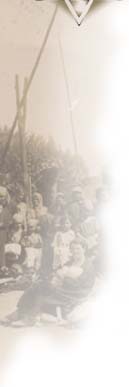|
|
|||||||||||||
|
|
|
|
|
|
|
||||||||
The Jews in Švėkšna
The first Jew under the name of Elyas was mentioned in the written sources in 1644. In 1695, there were about 100 Jews among 700 residents of the town, and in 1765 the Jews accounted for 50% of the total number of the Švėkšna population. Just like in other towns, the Jews of Švėkšna were involved in crafts, trade and other activities such as renting mills, farms, keeping shops and inns. They were mostly located in the centre of the town, where they had favourable conditions for developing their businesses. The monopoly of trade in the town was firmly held by the Jews. They owned about twenty shops during the interwar period. There were two synagogues in the town that burnt down in the fire on 15 May 1925. One of them was rebuilt later as a brick building, and it has been preserved until our days, but it is in a very poor state. The synagogue of Švėkšna was built in the main square of the town, and that was an unusual phenomenon as compared to other towns in Lithuania. The Jewish cemetery was in the northern part of the town, at some distance from the road to Veiviržėnai, on its right side. This big and old cemetery, going down to the 17th century, was destroyed during the years of the German occupation. The Jews made up the majority of population in Švėkšna before World War II, with nearly 400 Jewish families living there. The Jewish community of Švėkšna was completely exterminated during the period of the German occupation. At the beginning, the Jews of the town were concentrated into a separate quarter, or ghetto, that was surrounded by the synagogue, Siauroji and Žydų (present Macijausko) streets. Later on, the men were separated from their families and transported to the forced labour camps established in the area of Šilutė, where they had to dig trenches, build roads, work in quarries, etc. These labour camps were liquidated in the summer of 1943, and able-bodied Jews were removed to the concentration camp in Auschwitz. The women, elderly men and children, left in the ghetto of Švėkšna, were murdered. They were shot down in the grove of Inkakliai, 6 km from Švėkšna.
|
|||||||||||||

